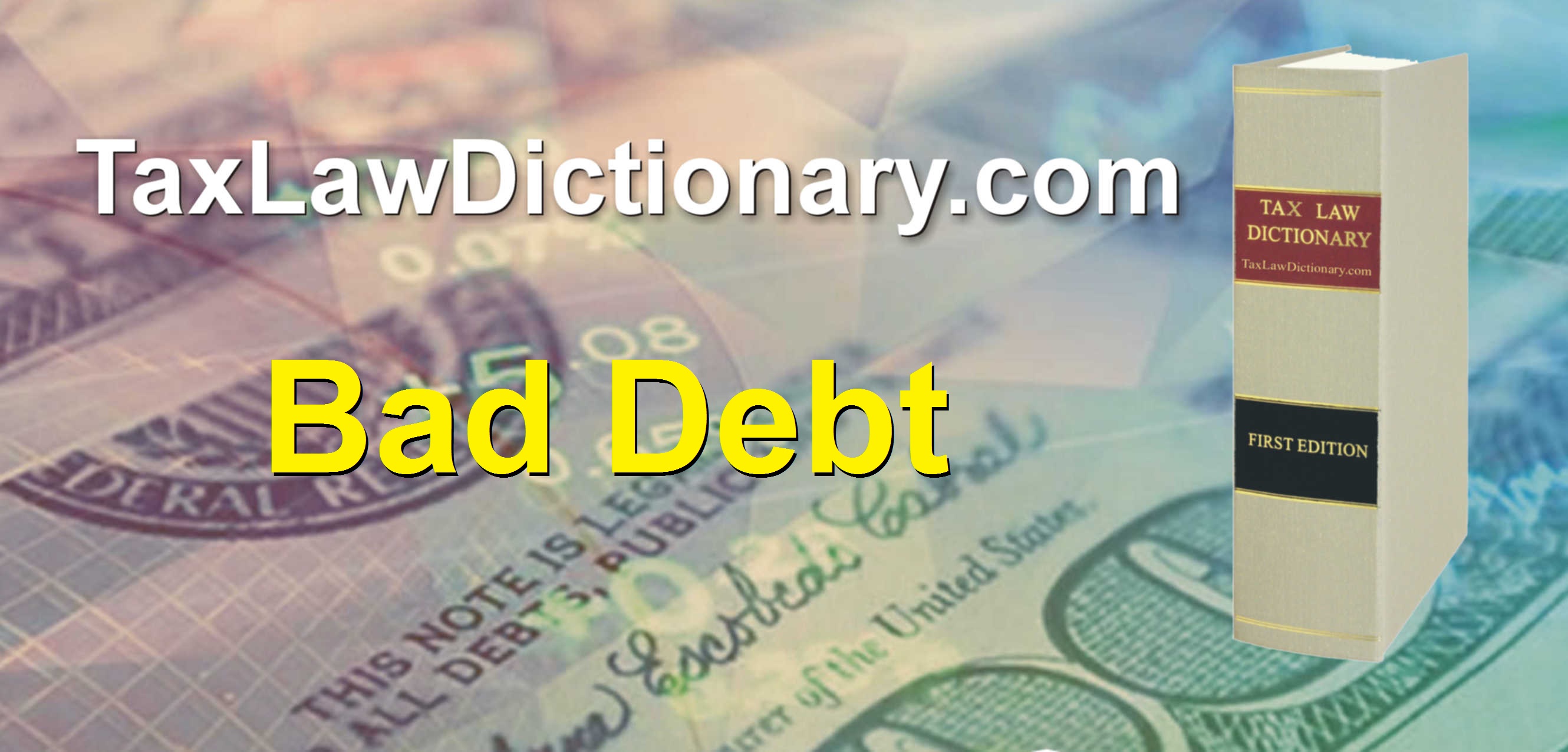 Tax Law Term “Bad Debt“
Tax Law Term “Bad Debt“
In general, there is allowed as a deduction any business bad debt which becomes worthless within the taxable year. A non-business debt which becomes worthless within the taxable year is considered a loss from the sale or exchange of a capital asset held for not more than one year. A non-business bad debt is reported as a short term capital loss.
Bad debt is an expense that all businesses have to allow for. Companies that make sales on credit often estimate the percentage of sales they expect to become bad debt, based on past experience, and record this in the allowance for doubtful accounts, which is also known as a provision for credit losses. investopedia
A bad debt is a monetary amount owed to a creditor that is unlikely to be paid and, or which the creditor is not willing to take action to collect because of various reasons, often due to the debtor not having the money to pay, for example due to a company going into liquidation or insolvency. There are various technical definitions of what constitutes a bad debt, depending on accounting conventions, regulatory treatment and the institution provisioning. In the USA, bank loans with more than ninety days’ arrears become “problem loans”. Accounting sources advise that the full amount of a bad debt be written off to the profit and loss account or a provision for bad debts as soon as it is foreseen. Wikipedia
